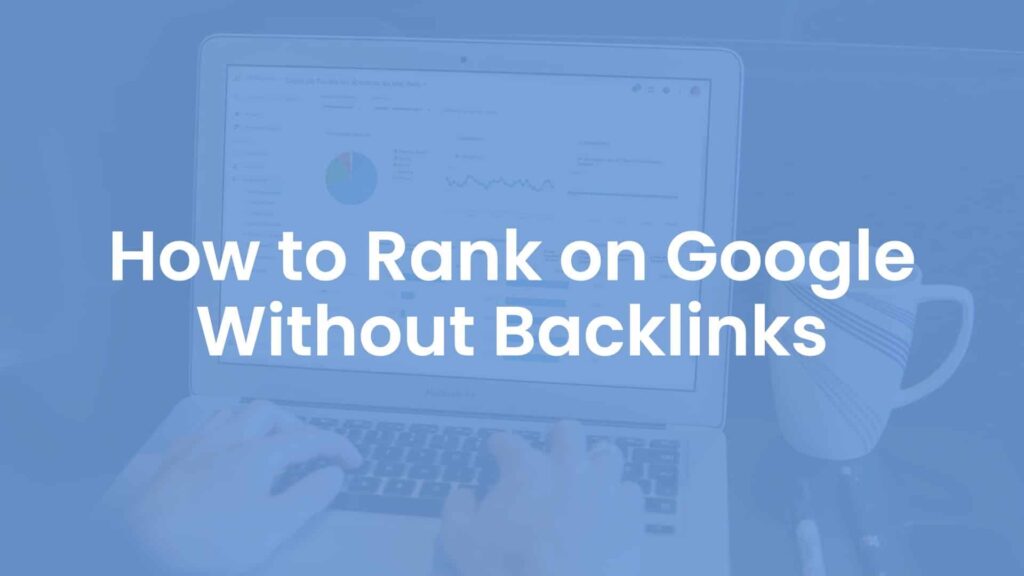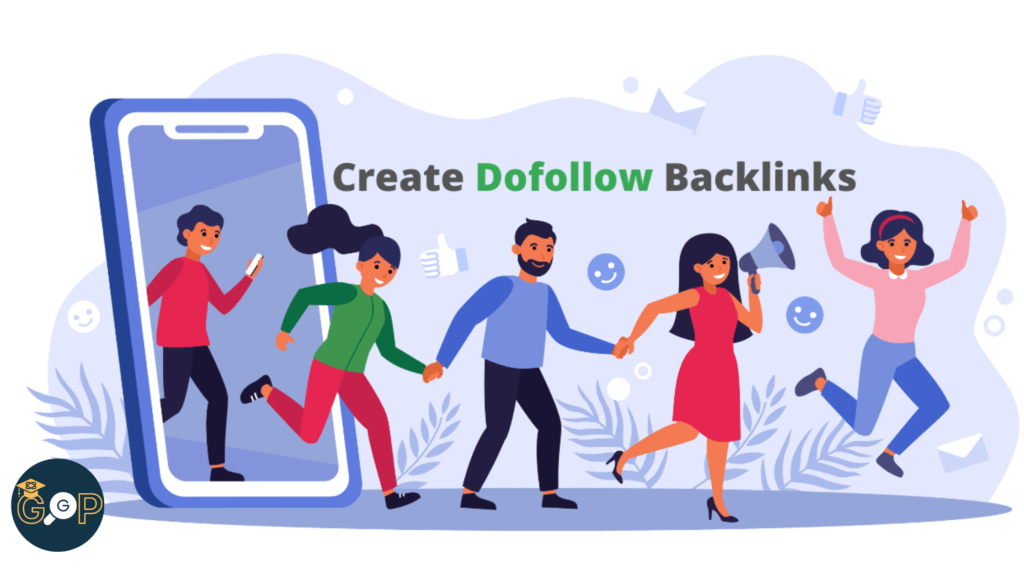Ranking without any backlink? YES! You can get your website ranked on Google without any special backlink.. (with just Social media sharing)
Did you know that most websites listed and ranking on Google rank without building a single backlink? John Mueller of Google said on Twitter that “most” websites rank without building a single backlink.
So I put together all the steps to make a well optimized and well structured website to get recognized by search engines and get rank without any backlink… and in this post I’m gonna show you How Exactly You Can Do This TOO?
My Experience: Rank Without Links
In 2020 I made my first blog about universities in a city. Additionally, I covered other topics related to studying in this city.
I wrote one article about each university, totaling 13 articles (1500 words on average), plus 3 articles about related subjects, published over a two-year period. And I didn’t build any backlinks.
Surprisingly, I was on the first page for every keyword I targeted (long tail keywords and short tail keywords), and I was on the 1st and 2nd result for other keywords, within five months of publishing my first article, I began to see results.
I was shocked when I outranked 2 pages of a university’s site (main page + category page) in the SERP of the university’s name.
According to Ahrefs, the main page had 9800 backlinks (88% dofollow), the category page had 1 dofollow backlink, the on-page SEO was poor, and the site also had a DR of 50, whereas my blog had a DR of 0, and I could say that my on-page SEO was good.
The 3 Part SEO Strategy For Safe & Fast Rankings
My 15 years in the SEO trenches revealed a powerful truth: rapid Google rankings demanded a strategic approach. My solution? A 3-part plan focused on:
- Building Brand Trust: Establishing swift Google trust was paramount. Through meticulous on-page optimization and high-quality content, I laid the foundation for a strong, trustworthy brand image.
- Leveraging Power Pages: Targeting my main key phrases required a dedicated strike force. I crafted “power pages” optimized for these keywords, designed to dominate search results and attract organic traffic.
- Collective SEO Boost: The success of those power pages wasn’t siloed. Their strength spilled over, boosting the SEO performance of my entire website. This domino effect amplified overall visibility and organic traffic growth.
This combined approach proved to be the key to unlocking Google’s top ranks in record time.
Step 1: Build Brand Trust With Google
Many SEO professionals underestimate the critical role of brand building in achieving sustainable success. Neglecting this crucial step limits the effectiveness of other SEO efforts, hindering long-term growth.
Brands, with their inherent trust and authority, naturally attract links. This can happen organically through PR campaigns, online advertising, or dedicated fans showcasing their loyalty. Google, recognizing this trust, rewards established brands with favorable treatment, often protecting them from algorithm updates and granting them prime real estate within SERPs.
Interestingly, leading brands rarely target specific keywords on their homepages when acquiring backlinks. A quick glance at Amazon’s homepage backlinks reveals this phenomenon. The majority of anchor texts simply reference “Amazon” or “Amazon.com,” highlighting the brand itself rather than specific keywords.
This strategy emphasizes the trust inherent in established brands, leading to a plethora of non-keyword backlinks pointing towards their homepages.
Inspired by this approach, I employed similar tactics with Guest Post Tracker. I prioritized acquiring links from business and marketing-related websites with “GuestPostTracker.com” and “Guest Post Tracker” as the primary anchor texts. This deliberate effort aimed to signal to Google that Guest Post Tracker was not just a fleeting website, but a legitimate and credible business with a strong brand identity.
To achieve this, I engaged in extensive guest posting campaigns, leveraging my existing list of high-quality blogs on Guest Post Tracker and utilizing a blogger outreach service to fill any remaining gaps. Throughout this link-building process, I meticulously followed the SEOJet-generated link map, ensuring optimal anchor text usage for each backlink.
Step 2: Create SEO Power Pages To Rank For Key Phrases
An SEO power page is your website’s content magnet, attracting links naturally through its sheer awesomeness. Think of it as “pillar content” or a “linkable asset” – something valuable enough to warrant a link, unlike a simple product page. This makes white-hat link building a breeze, as other blogs readily link to valuable resources.
These are the heavyweights of your content strategy, often exceeding 2,000 words in blog format or serving as crucial site pages. They serve two strategic purposes:
- Keyword Targeting: Optimize for one or two key keywords, strategically using them throughout the page. Google expects this focused approach. Backlink research reveals non-homepage power pages typically have 55-75% of backlinks containing keyword references in the anchor text. SEOJet’s link map tool helps you choose the perfect anchors to use.
- Link Power Distribution: As your power page earns backlinks, its SEO strength increases. This power is then distributed to other pages through internal linking, boosting their visibility.
In the initial stages of Guest Post Tracker, I prioritized building links to the homepage. In fact, for the first few months, it received three times more backlinks than all other pages combined. These “other pages” consisted of a mere 5-6, including the homepage.
Building these backlinks was a straightforward process. I simply followed the guidance provided by each link map, ensuring my backlink profile for every page mirrored the characteristics of a #1 ranked website. This natural-looking approach kept Google happy throughout the process.
Step 3: Use Power Pages To Pass SEO Value To Rest Of Your Site
Guest Post Tracker, with its 30 category pages listing guest post-accepting blogs, exemplifies this. These pages, while light on content, are crucial for user experience and deserve top search positions. Building backlinks directly to them, however, could be expensive and unnatural.
Enter Power Pages. By crafting Power Pages targeting relevant keywords and actively building backlinks to them, we amassed significant SEO juice. This juice was then channeled to the category pages through internal links.
The results were immediate and impressive. Within days, nearly all category pages dominated the top 3 positions in Google for their respective keywords. Search “real estate guest post” to witness Guest Post Tracker’s dominance firsthand.
While some may argue that these keywords aren’t highly competitive, that’s precisely the point. Zero direct backlinks were needed to catapult these category pages to the top. By optimizing Power Pages, we inadvertently boosted other pages, leading to a dramatic increase in both traffic and conversions.
How To Get More Results With Less Links
Within months of launching a key power page, I was surprised to find it ranking in the top 3 of Google for its target keywords. This success validated my SEO strategy, which heavily relied on the insightful link maps provided by SEOJet.
However, curiosity piqued, I analyzed the other top 6 websites ranking for the same phrase. My jaw dropped as I observed their backlink profiles: a staggering 70-600 links compared to my mere 8.
This was a pivotal moment. Despite being just 6 months old, my power page had achieved top 3 rankings with 70% less backlinks than the competition. This confirmed the effectiveness of SEOJet’s link building strategy, enabling me to rank high quickly.
While I continued building links regardless of ranking, this experience highlighted the power of establishing brand trust and creating exceptional backlink profiles for power pages. This combined effort resulted in a significant boost in website revenue from organic search traffic.
The Bottom Line
It’s no secret that you need a strong backlink profile to rank effectively in search engine results pages (SERPS).
However, many individuals think backlinks are essential for website ranking.
Simply said, this is untrue. While backlinks are undoubtedly one of these elements, they are not the only ones; there are many other aspects that affect how your site ranks.
Put simply: yes, you can rank a site better for specific terms without links though if the site is in a moderately competitive to competitive niche, it won’t stay there long without them.


![Link Building Pricing [2024 Average Costs for Links]](https://greatguestposts.com/wp-content/uploads/2023/11/Link-Building-Pricing-2024-Average-Costs-for-Links-1024x576.png)
